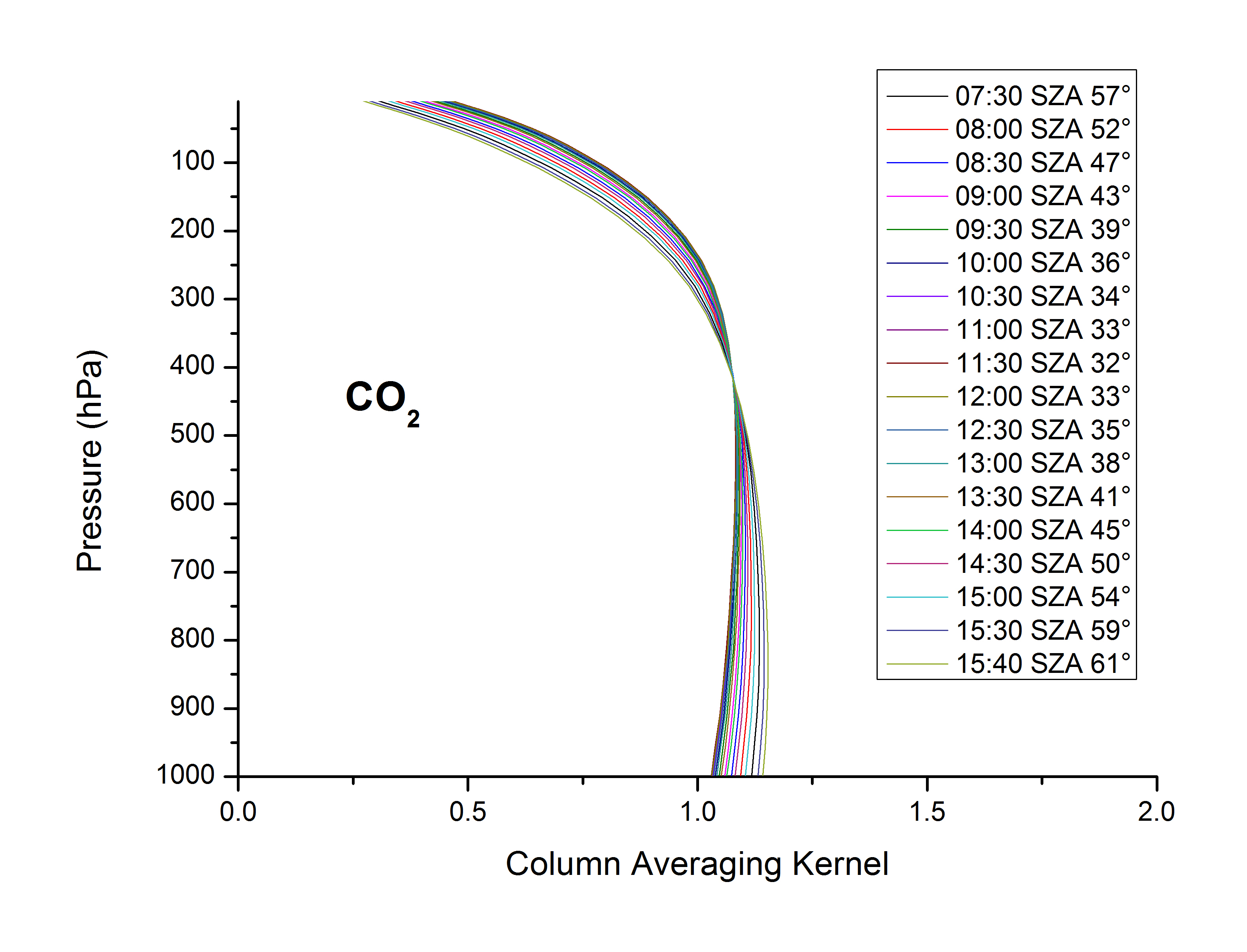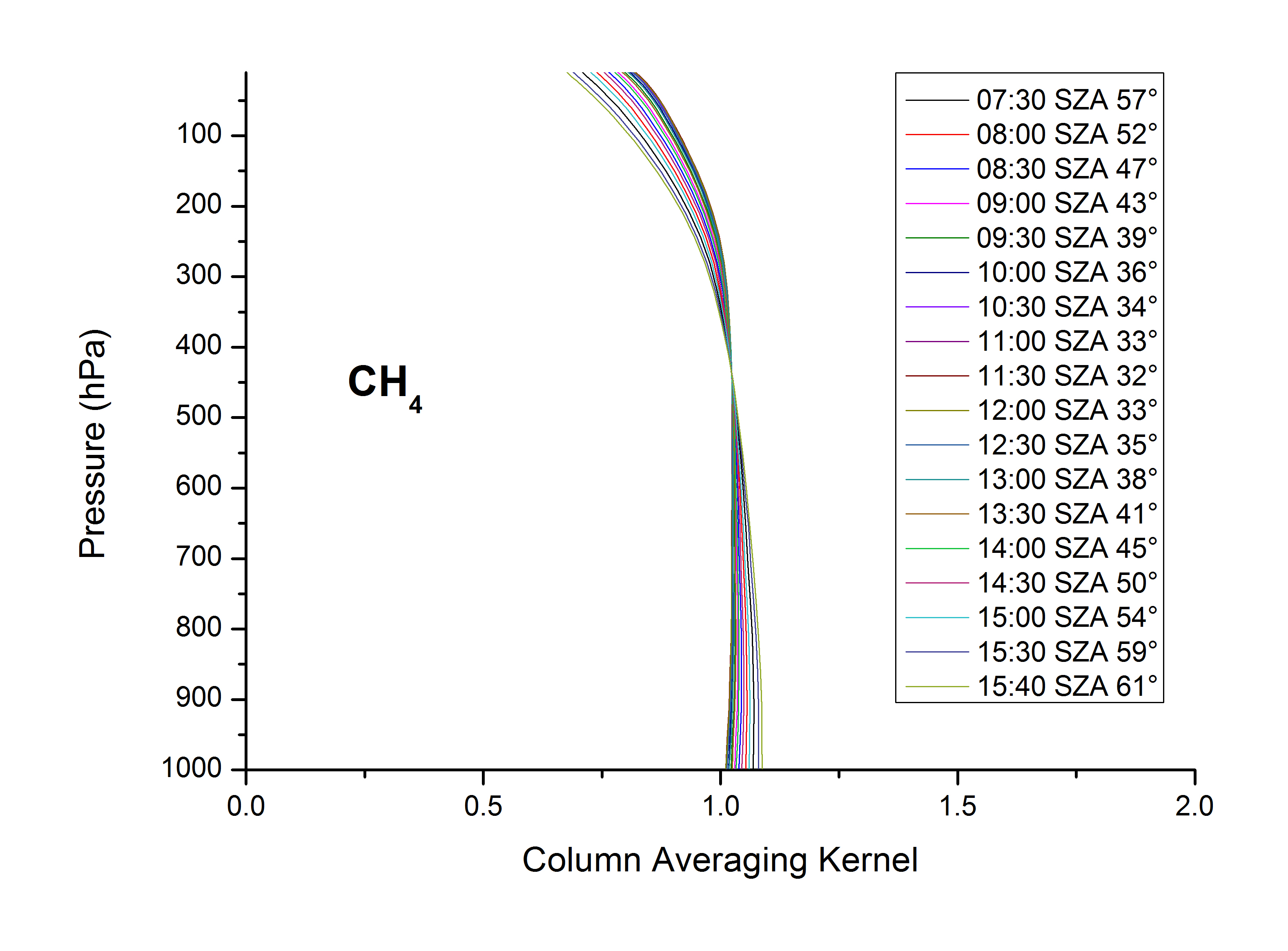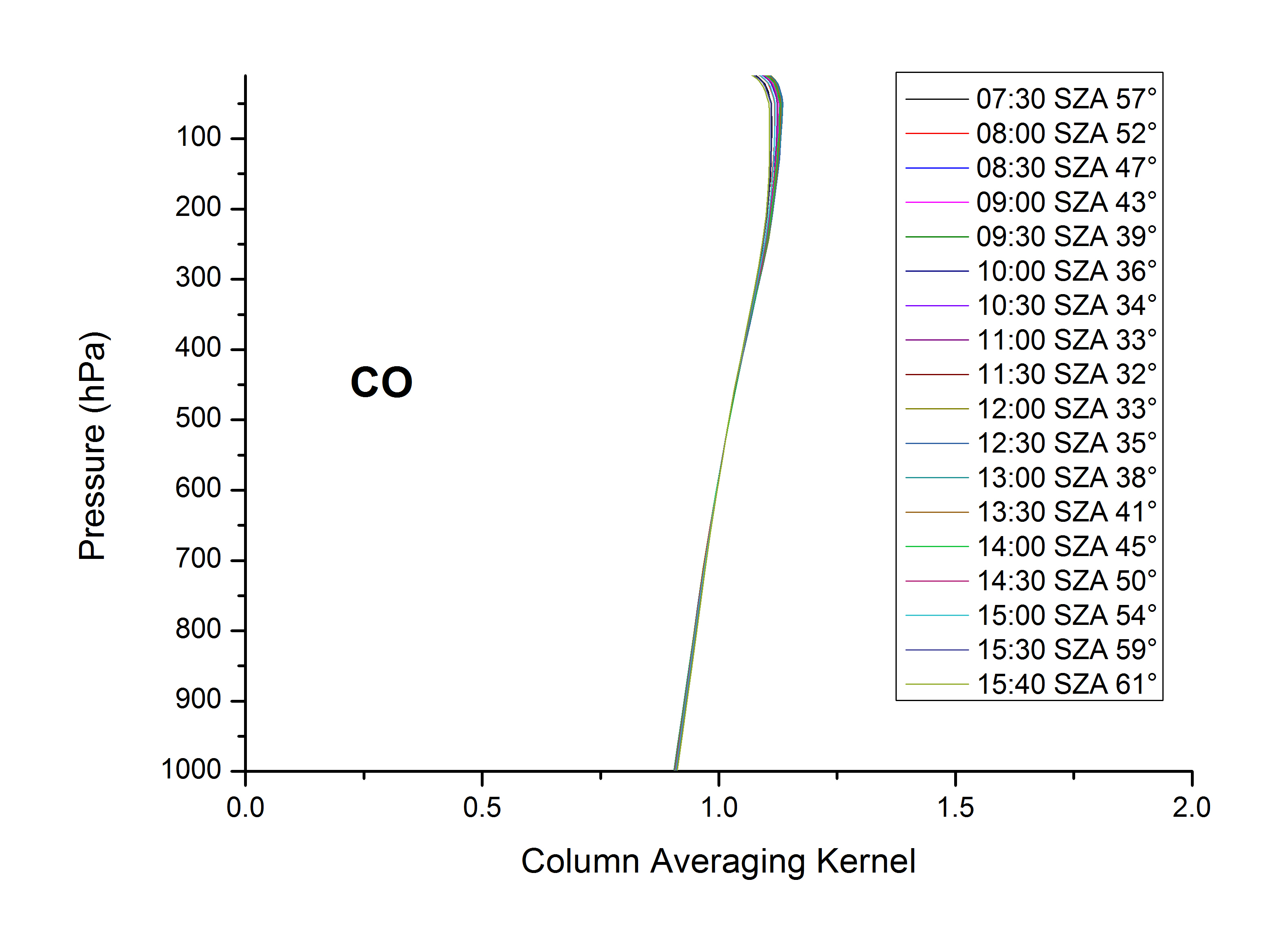Column Sensitivities of COCCON
For comparing observations collected with different remote sensing instruments or for comparing remote sensing observations with model data, the limited capability of the remote sensing observation in reconstructing the actual atmospheric state needs to be taken into account. In general, this requires the a-priori profile which was used for the retrieval and the averaging kernel matrix, which specifies the loss of vertical resolution (fine vertical details of the actual trace gas profile cannot be resolved) and sensitivity (the retrieved total column differs from the actual column amount) [e.g. Rodgers, 2003]. In the case of COCCON, the spectrometers used be the network offer only a low spectral resolution of 0.5 cm-1. Therefore, performing a simple least squares fit by scaling retrieval of the a-priori profile is generally appropriate. In this case, there is no need to specify a full averaging kernel matrix, instead, the specification of a total column sensitivity is sufficient. The total column sensitivity is a vector (being a function of altitude), which specifies to which degree an excess partial column superimposed on the actual profile at a certain input altitude is reflected in the retrieved total column amount (ideally, the sensitivity at each level is unity). The resulting sensitivity vector is a function of solar zenith angle (and ground pressure), mainly due to the fact that the observed signal levels in different channels building the spectral scene used for the retrieval are shaped by a mixture of weaker and stronger absorptions (if all spectral lines in the spectral scene would be optically thin and too narrow to be resolved by the spectral measurement, the sensitivity would approach unity throughout).
In the following figures we present pressure-dependent column sensitivities for carbon dioxide, carbon monoxide and methane. These sensitivities are derived from measurements performed in Karlsruhe on May 7 2018. The solar zenith angles during the measurement time range from 32° to 61°. The shape and values of the column sensitivities from Karlsruhe closely resemble the results derived by Hedelius et al. (2016) in Pasadena.



